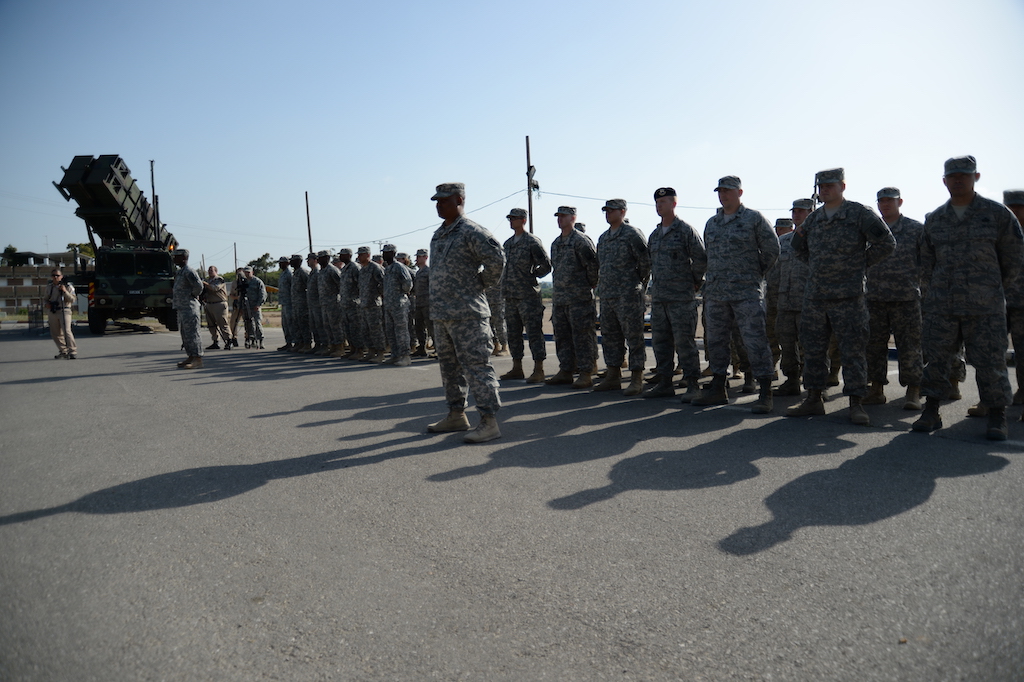Redefining Victory in Democracy’s War on Terror
In the fight against terrorism, victory should be defined as a continuous process of providing security and maintaining society’s core values in the face of terrorist threats.

Published by The Lawfare Institute
in Cooperation With

The U.S. wars in Iraq and Afghanistan, recent U.S. operations against Shi’ite militant groups in Iraq, and Israel’s wars against Palestinian and Lebanese terrorist organizations are all examples of a new type of war that Western states are currently fighting. Although this “new war” forms the majority of ongoing armed conflicts, states lack a clear understanding of what victory looks like in those conflicts. That is, leaders and planners lack a definition of what they aim to achieve when fighting terrorist organizations. When no commonly accepted definition of victory exists, even major tactical successes can lead to failure. In this post, we propose that, within the context of war against terrorist organizations and other violent nonstate actors, victory should be defined not as a singular event but rather as a continuous process of providing security while maintaining society’s core values in the face of terrorist threats.
The term “victory” itself is not as obvious or intuitive as some may think. Theoretically, victory in war can be viewed as an objective, rational function between the costs—measured  in casualties, loss of resources, damage to infrastructure and the like—and benefits, measured in the new political reality achieved following military and political efforts. However, this new reality can be considered a victory only insofar as it matches the values and preferences of the party going to war. The same is true in terms of cost: The question of which costs are acceptable and which ones are not is a deeply subjective one, deriving again from values and norms of the society seeking victory. In this post, therefore, we define victory as the achievement of the political goals of the war, as defined by the state according to its core values (as enshrined in its constitution and other foundational documents) and the creation of a stable political reality.
in casualties, loss of resources, damage to infrastructure and the like—and benefits, measured in the new political reality achieved following military and political efforts. However, this new reality can be considered a victory only insofar as it matches the values and preferences of the party going to war. The same is true in terms of cost: The question of which costs are acceptable and which ones are not is a deeply subjective one, deriving again from values and norms of the society seeking victory. In this post, therefore, we define victory as the achievement of the political goals of the war, as defined by the state according to its core values (as enshrined in its constitution and other foundational documents) and the creation of a stable political reality.
Carl von Clausewitz, the great theoretician of war, stressed that among the most important decisions for any strategy is the question of “which war are we fighting.” To a large extent, the perception of victory today still largely builds on wars fought in 19th century Europe, a world of unitary nation-states that defined their political goals according to jointly held normative standards. Most wars today, however, display radically different features.
Today’s wars are heavily influenced by two major factors: transparency and diversity. In terms of transparency, the internet, phone cameras and social media have massively increased the flow of information and limited states’ ability to control it. Reporting of conflicts occurs almost in real time by various parties. In the past, achievements on the battlefield translated into a strategic advantage that gradually came to influence policy. Nowadays, images from the battle itself are broadcast directly to citizens and leaders, influencing their views; actions and choices about the conflict; and, thereby, policy.
In terms of diversity, wars today often involve significantly different actors than in the past. Many of these are organizations that operate under ideologies, values, norms and command structures that diverge sharply from those of nation-states. Due to dispersed command structures and ideological fervor, they are often able to continue fighting after sustaining losses that would cause a regular army to surrender. Indeed, many of these groups adopt a strategy of nonsurrender, denying victory to the other side. Such strategies, when employed effectively, can turn war into a never-ending stalemate.
Nonstate actors also capitalize on the effects of transparency. The narrative of the victim is a powerful one for both media and audiences: An image of a child facing a tank will generate immediate sympathy. Since nonstate actors tend to be militarily inferior to states with conventional armies, this narrative works in their favor. Transparency therefore serves as an equalizer, strengthening the weaker side of a conflict and vice versa.
The resulting dynamic is one in which war between states and nonstate actors becomes, in a sense, a reality show where military actions (mostly on the part of nonstate actors) are carried out not in order to achieve success on the battlefield but rather to manufacture a set of powerful images that shape international and domestic perceptions. The battlefield extends wherever cameras and broadband internet connections take the images.
When conflict cannot be decided militarily, the military front should be seen as subservient to two other fronts: the international, in which success is measured by legitimacy, and the home, where it is measured by the maintenance of social resilience.
In terms of legitimacy, terrorist organizations rely heavily on the support of their own populations for resources, protection and recruitment. Driving a wedge between these organizations and their surrounding populations is therefore crucial to achieving victory. This includes strictly maintaining the principle of distinction between combatants and civilians, as well as providing hope and financial incentives to the latter. Largely, these are also the main actions that bolster international legitimacy. Each military action should therefore be weighed with these goals in mind.
The home front is where terrorist organizations exert most of their efforts, attempting to weaken national morale and facilitate internal collapse. The crucial factor for the home front is maintaining social resilience, or a society’s ability to function effectively during an ongoing crisis and uphold its core values.
Social resilience is based on a sense of trust between citizens from different communities and sectors. The main threat to social resilience in most democracies today is polarization. This is especially true since globalization and refugee influxes have made most Western states increasingly heterogenous; when terrorism strikes and pressure mounts, there is a tendency to distrust communities and individuals that are already seen as “the other,” especially those that share ethnic or religious characteristics with an external enemy. This serves as a fertile soil for the emergence of terrorism and radical movements, as well as for the rise of populism and an increase in political polarization. One of the key ways to counter this threat is by maintaining democratic norms and institutions, which are uniquely able to arbitrate social disputes and increase mutual trust within society.
As terrorism becomes more violent and deadly and public pressures mount to provide a prompt solution, there is an increasing temptation for governments to relax some democratic checks and balances in order to counter it more effectively. This temptation relies on a paradigm of “defensive democracy,” which maintains that the limits placed on the use of force and democracy’s protections of human rights even during wartime are structural deficiencies in the face of terrorism. However, when the war in question has no clear beginning and end point, the threat of a permanent erosion of rights and liberties becomes a very real one, making the war a threat to democracy itself.
The erosion of democracy does not manifest only in the limitation of rights; the fight against terrorism can also erode systems of checks and balances. The fact that the conflict is not perceived by the public and the legal system as an outright war can allow the executive branch to use force without consulting other branches of government, giving it almost exclusive control over the most important decision in the life of a nation—the decision to go to war.
Taken together, an erosion of rights and an increase in the power of the executive branch without a clearly defined end point in sight could set up the conditions for a security state through a process of “incremental tyranny.”
This risk could be averted, however, if we view the maintenance of democratic rights and norms not as a hindrance to fighting terrorism but rather as a crucial tool for doing so. Democratic norms allow the arbitration of social conflicts and bolster social resilience. Such resilience is also supported by the formation of national consensus about the decision to engage in war—such consensus being far more likely to emerge when the executive branch must take the views of the legislature into account. And, far from being a weakness, restraint in the use of force is crucial for achieving legitimacy, both internationally and vis-a-vis the adversary’s society.
Therefore, we posit that the paradigm of defensive democracy should be replaced with a paradigm of “inclusive democracy,” which holds that defending democratic values is both a central and an essential component in the struggle against terror and a goal in and of itself.
Since this new type of war is an ongoing struggle with no fixed end point, the political goal by which victory is defined is no longer a different, future reality to be attained but rather a present and continuous reality to be maintained. A democratic government’s political goal in this new type of war should be the ongoing preservation of security, while ensuring a high standard of living for its citizens and upholding its society’s core values in spite of an ongoing and lengthy conflict. This is similar to law enforcement efforts, where the goal is not to completely eliminate crime but to reduce it to a manageable level while adhering to society’s values. The adoption of this new paradigm requires a change in political; military; and, perhaps most importantly, legal thinking about the war on terror.





